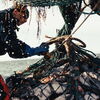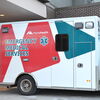Processing Your Payment
Please do not leave this page until complete. This can take a few moments.
- News
-
Editions
-
- Lists
-
Viewpoints
-
Our Events
-
Event Info
- Business Leaders of the Year Reception 2025
- Women's Leadership Forum 2025
- On the Road with Mainebiz in Bethel
- Health Care Forum 2025
- On The Road with Mainebiz in Greenville
- On The Road with Mainebiz in Waterville
- Small Business Forum 2025
- Outstanding Women in Business Reception 2025
- On The Road with Mainebiz in Bath
- 60 Ideas in 60 Minutes Portland 2025
- 40 Under 40 Awards Reception 2025
- On The Road with Mainebiz in Lewiston / Auburn
- 60 Ideas in 60 Minutes Bangor 2025
Award Honorees
- 2025 Business Leaders of the Year
- 2024 Women to Watch Honorees
- 2024 Business Leaders of the Year
- 2023 NextUp: 40 Under 40 Honorees
- 2023 Women to Watch Honorees
- 2023 Business Leaders of the Year
- 2022 NextUp: 40 Under 40 Honorees
- 2022 Women to Watch Honorees
- 2022 Business Leaders of the Year
-
-
Calendar
-
Biz Marketplace
- News
- Editions
- Lists
- Viewpoints
-
Our Events
Event Info
- View all Events
- Business Leaders of the Year Reception 2025
- Women's Leadership Forum 2025
- On the Road with Mainebiz in Bethel
- Health Care Forum 2025
- On The Road with Mainebiz in Greenville
- + More
- On The Road with Mainebiz in Waterville
- Small Business Forum 2025
- Outstanding Women in Business Reception 2025
- On The Road with Mainebiz in Bath
- 60 Ideas in 60 Minutes Portland 2025
- 40 Under 40 Awards Reception 2025
- On The Road with Mainebiz in Lewiston / Auburn
- 60 Ideas in 60 Minutes Bangor 2025
- - Less
Award Honorees
- 2025 Business Leaders of the Year
- 2024 Women to Watch Honorees
- 2024 Business Leaders of the Year
- 2023 NextUp: 40 Under 40 Honorees
- 2023 Women to Watch Honorees
- 2023 Business Leaders of the Year
- + More
- 2022 NextUp: 40 Under 40 Honorees
- 2022 Women to Watch Honorees
- 2022 Business Leaders of the Year
- Nomination Forms
- Calendar
- Biz Marketplace
Maine fishermen ask feds to slow offshore wind development
 Courtesy / State of Maine, Governor’s Energy Office
Fishermen remain concerned about potential conflict with the offshore wind industry. Maine is looking at an experimental array in the Gulf of Maine.
Courtesy / State of Maine, Governor’s Energy Office
Fishermen remain concerned about potential conflict with the offshore wind industry. Maine is looking at an experimental array in the Gulf of Maine.
The state of Maine is officially bullish about offshore wind-power development, as Gov. Janet Mills and her administration study possible uses of the renewable energy at the state's commercial ports and pursue a lease in federal waters for a pilot project.
But Maine fishermen remain concerned about the potential effects of offshore wind power on their industry.
One fisherman from Stonington this week told officials with the U.S. Department of the Interior's Bureau of Ocean Management that commercial leasing process in the Gulf of Maine should be slowed until there’s more research on the interaction between the two industries.
Virginia Olsen, who is also with the Maine Lobstering Union, cited an offshore wind research site proposed last year by the Governor's Energy Office for federal waters off southern Maine.
“Shouldn’t we get results of the array before we start the leasing process?” Olsen said, during a public meeting on Monday hosted by the bureau.
The meeting was the first of a series being held this month to solicit input on guidance developed by the bureau for ways to mitigate impacts from offshore wind projects on commercial and recreational fisheries and fishing.
Olsen said research from the array is expected to include results on topics such as how the industry will operate around the structures and any impacts generated by the array’s electromagnetic field on organisms.
“The answers will be beneficial before we move into the commercial leasing process,” she said.
Amanda Lefton, the bureau’s director, said the bureau endorses the research and intends to invest in further research in the gulf in order to identify potential areas for offshore wind siting that have the least impact on the fisheries.
“I do expect the pilot will inform in some ways our continued exploration of potential commercial development, which is a little later down the line,” said Lefton, who added that she expected it would be “a number of years” yet before commercial leasing in the gulf begins.
The draft guidance presented in the session was developed based on public input received in late 2021. Last November, the bureau published a request for information to obtain input from the public, especially the fishing community, on avoiding, minimizing and, if needed, compensating for impacts from offshore wind energy projects to commercial and recreational fisheries.
The comment period on the request for information closed Jan. 7.
The draft guidance was issued earlier this month.
Displacement, damage
When the guidance is finalized, the bureau will provide it to the offshore wind industry to help it develop processes and methodologies for reducing impacts to fisheries.
The bureau is required to consider impacts to the commercial and recreational fishing industries resulting from the approval of site assessment plans and construction and operations plans.
The bureau has identified a number of potential fishery impacts, including:
• Displacement from fishing grounds during offshore wind development activities or loss of fishing areas occupied by project components;
• Potential gear damage or loss from increased survey activity or new or additional underwater hazards;
• Gear or fishing modifications for fishing near turbines;
• Increased transit times;
• Increased gear conflict or operational competition within and outside of wind project areas if fishing effort is shifted due to offshore wind energy projects;
• Secondary economic impacts for support businesses such as seafood dealers, vendors to the fishing industry, processors and distributors.
The bureau is working with the National Oceanic and Atmospheric Administration, National Marine Fishery Service, state fishery and coastal management agencies, and technical experts to develop the draft guidance.
According to the draft guidance, wind site lessees would be asked to engage with commercial and recreational fishing communities before pursuing development of a lease site, with the goal of mitigating development impacts.
The draft document includes some specific guidelines on elements such as how and where to bury or suspend cables. Facilities would be designed to maximize access to fisheries, including within project areas. Turbine locations would be sited to avoid sensitive benthic features such as reefs.
Additional guidelines touch on specifics such as charting facilities and obstructions resulting from construction and operations, employing liaisons from the commercial fishing industry to provide safety and communication services during construction, monitoring cable burial in real-time, and using digital information technology platforms to bring together survey and construction schedules and locations.
Compensation for losses
The draft guidance also considers types of financial compensation to fishermen in cases of gear loss or lost income.
The draft proposes that the lessee should fully compensate fishermen for the repair or replacement of damaged gear and up to 50% of gross income loss during the period from the discovery of the lost or damaged gear to when the gear is repaired or replaced.
Also proposed is 100% reimbursement for income lost during construction. Once construction is complete, the guidance proposes a schedule of compensation for lost revenue ranging from 100% for the first year after construction to 50% five years post-construction.
But, said New Bedford (Mass.) Seafood Consulting Executive Director Jim Kendall, “You’re a long way into this process without having any understanding of how the industry will deal with these losses.”
Lefton said the idea behind the process for getting guidance was to gain that understanding.
During this week’s meeting, bureau officials said they expect that offshore wind and fishing can co-exist.
Brian Hooker, a marine biologist with the bureau, said it has the ability to mitigate unforeseen impacts of the wind industry, including the possibility of suspending or terminating leases.
“We have multiple ways to deal with unforeseen issues,” he said.
As the offshore wind industry picks up pace, he added, the bureau has measures in place to monitor the fishery resource and is open to input on how to monitor any impacts on fishery performance.













0 Comments